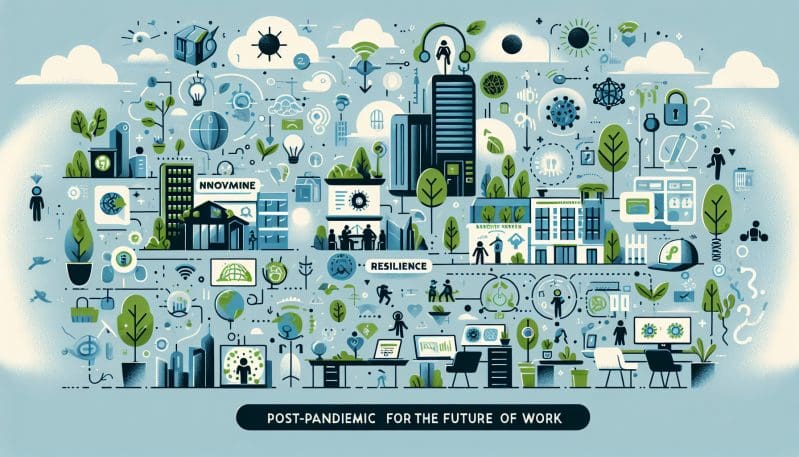The Future of Work: Navigating the New Norms in the Post-Pandemic Workplace
- Home
- The Future of Work: Navigating the New Norms in the Post-Pandemic Workplace
- Editors Desk
- March 8, 2024
- 0 Comments
The world of work has always been in a state of flux, but the onset of the COVID-19 pandemic accelerated changes in a manner few could have anticipated. As we emerge from this unprecedented global disruption, it’s clear that the work ‘normal’ we once knew is being redefined. This article offers an in-depth analysis of the post-pandemic workplace and its implications for workers, employers, and the broader labor market.
The Rise of Remote Work: A New Frontier
The concept of remote work is certainly not new, but pre-pandemic, it was far from the norm. With the pandemic came a necessary reliance on technology to keep businesses afloat, propelling remote work from a fringe benefit to a standard practice for many. This shift has brought with it a host of challenges and benefits. Workers have been grappling with blurred work-life boundaries and the ‘always on’ culture, while delighting in the absence of daily commutes and the flexibility to manage personal and professional responsibilities concurrently.
The Impact of Technology: A Double-Edged Sword
As reliance on digital tools grows, so does the concern over job security and the changing skill sets required. Automation and artificial intelligence are redefining roles, leading some to thrive while others strive to keep up. This technological revolution demands a workforce that is agile and continuously learning, creating both opportunities and obstacles.
Mental Health and Well-being: A Virtual Conundrum
The virtual work environment may offer flexibility, but it can also be isolating. Employers must now navigate the complexities of supporting mental health and well-being from afar. The pandemic spotlighted the importance of work-life balance and the need for employers to foster a culture that values employee well-being as a cornerstone of productivity.
The Role of Employers: Creating Adaptive Workplaces
As the custodians of the workplace, employers have a pivotal role in creating resilient, inclusive, and adaptive work environments. They must lead the charge in reimagining policies and practices that meet the evolving needs of their workforce, ensuring a fair and equitable workplace despite geographical dispersion.
The Evolving Workforce: Labor Unions and Employee Strategy
Labor unions and employees must also rethink their strategies to stay relevant in this new landscape. Collective bargaining may now need to encompass remote work policies, technology training, and mental health provisions. It is a time of significant negotiation and adaptation for all parties involved.
A Permanent Shift or a Passing Phase?
Are these shifts a mere reaction to an extraordinary event, or do they signify a permanent alteration in the fabric of our work lives? As we consider the future of work, it is essential to prioritize fairness, equity, and opportunity for all. An inclusive approach will be vital in ensuring that the advancements in our work lives do not become a new source of division.
In conclusion, the post-pandemic workplace presents as many opportunities as it does challenges. The trajectory of these changes will depend on the collective response of employers, employees, and labor organizations. Together, they must chart a path forward that harnesses the benefits of the new work norms while safeguarding against potential pitfalls. The unfolding chapters of this story will be crucial in determining the quality and character of our working lives for generations to come.

